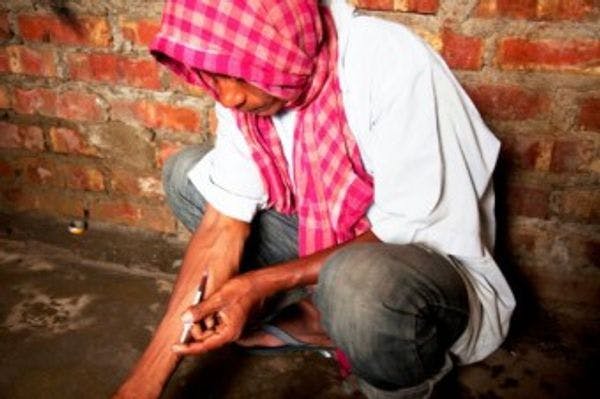The pain of being the other: How stigma fuels HIV/AIDS among people who use drugs in India
People who inject drugs face widespread discrimination, physical violence, hostility and harassment that limits their access to lifesaving health services.
Born in a poor family in a remote district of Haryana, Paul (name changed) learnt from childhood to be by himself. He was dragged to work at the age of 10. It was here, copying older boys, he got into the habit of smoking ganja (cannabis). Soon his peers influenced him enough to experiment with stronger substances like smack (a heroin derivative). As his cravings increased, he was soon hooked on injecting pharmaceutical drugs, unaware that sharing needles and syringes could make him vulnerable to HIV.
Paul’s story is shared by many people who inject drugs (PWID) in India. There are thousands in India, who feel helpless because drugs control their bodies and minds. Addiction compels them to keep ‘using’ despite horrendous physical and mental consequences and unaware of their increased risk for HIV. It is estimated that the HIV prevalence amongst 180,000 PWID in India is approximately 7.1%.
Their vulnerability is further fuelled by the fact that society perceives drug users as criminals and a threat to society. This makes it difficult for people who want to reach out to them to build rapport and trust. This demonization further fuels the HIV epidemic in the country.
PWID are often assumed to be HIV-positive and refused treatment when clinical care is needed. There have been many instances of PWID being denied services at public healthcare facilities and instead getting arrested and suffering police brutality.
‘When I tested HIV-positive, hell broke on me. Going for treatment was scary as there was so much stigma attached with being a PWID,’ recalls Paul.
Sensitization efforts by India HIV/AIDS Alliance’s CAHR programme with healthcare facilities and psychosocial interventions with PWID have helped community members living with HIV avail stigma-free antiretroviral treatment. CAHR follows a harm reduction approach, which – as the name suggests – aims to reduce the harm associated with injecting drug use, such as vulnerability to HIV and Hepatitis C infection, rather than trying to eliminate drug use per se.
‘Thanks to CAHR, I am now comfortable with myself, comfortable with the fact that I am positive,’ says Paul.
This year the global theme of World AIDS Day is ‘Getting to Zero’: zero new infections, zero AIDS-related deaths, and zero discrimination. For the first two to happen, eliminating discrimination is essential. Building rapport with PWID and gaining their trust are essential in harm reduction programming and are the first steps towards getting to zero with PWID.
Keep up-to-date with drug policy developments by subscribing to the IDPC Monthly Alert.
